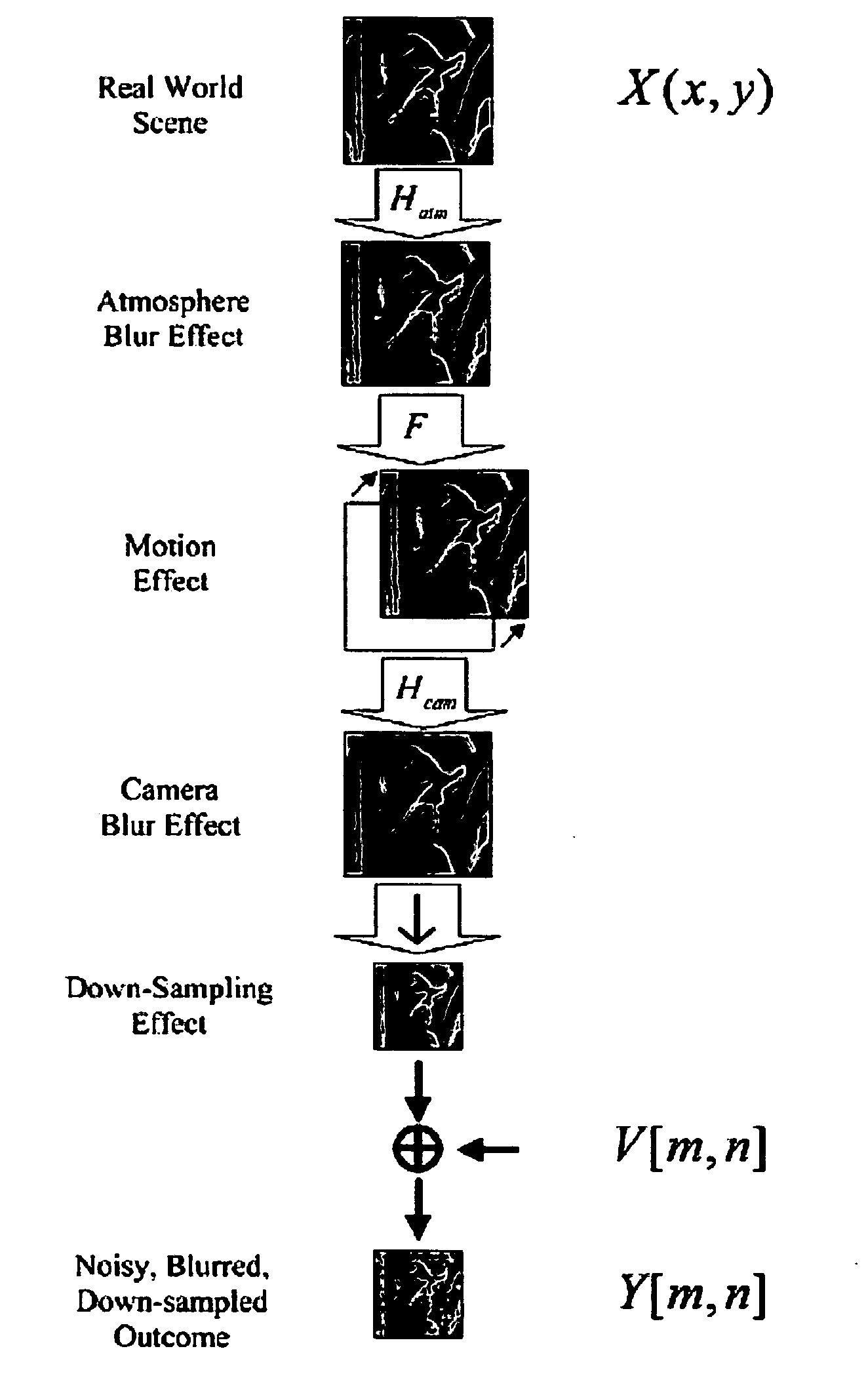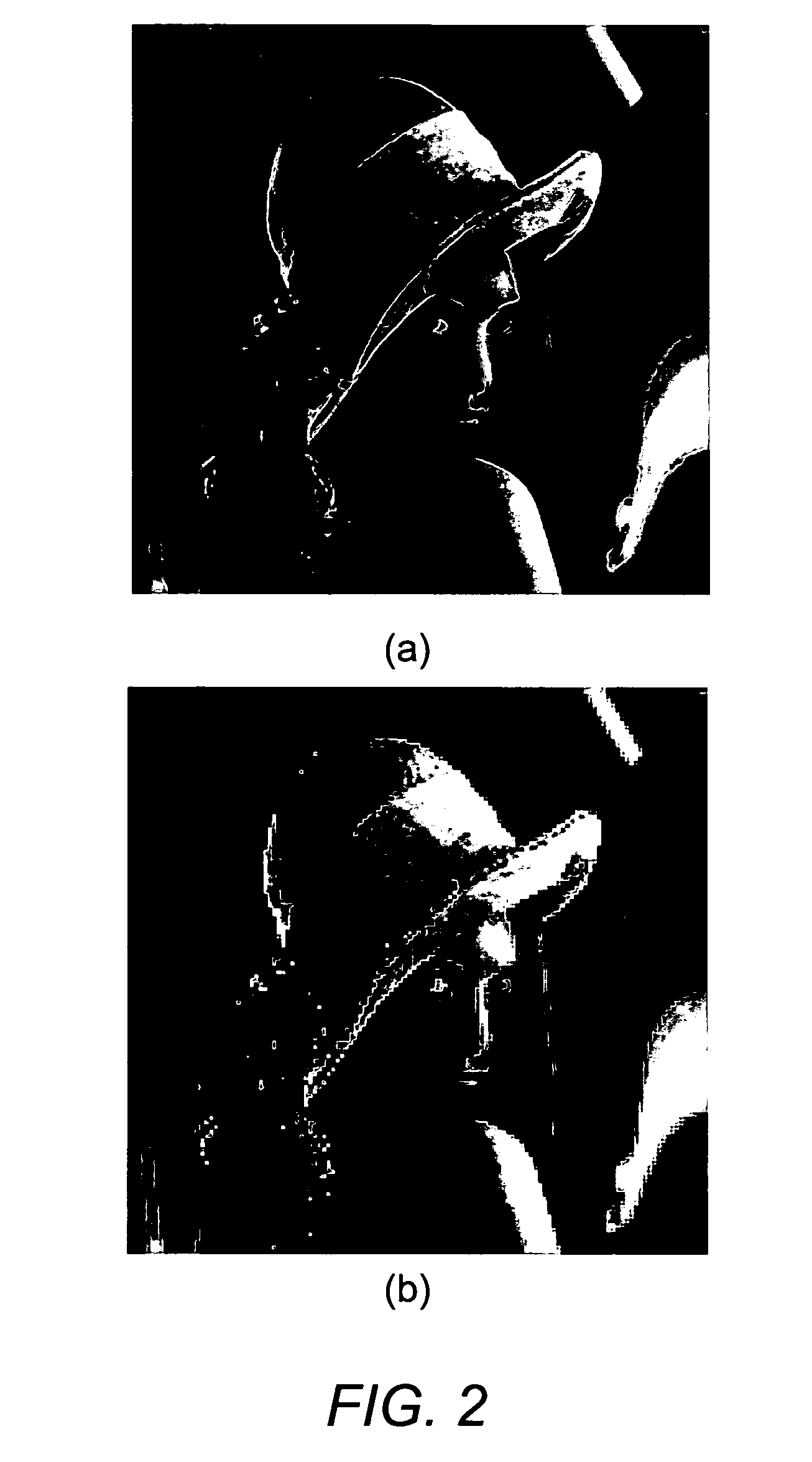Robust reconstruction of high resolution grayscale images from a sequence of low resolution frames
a high-resolution grayscale image and sequence technology, applied in image enhancement, digitally marking record carriers, instruments, etc., can solve the problems of inability to meet the requirements of high-resolution image reconstruction, inability to solve large differences in super-resolution images, and inability to increase computational complexity, etc., to achieve fast and robust super-resolution, fast convergence, and superior performan
- Summary
- Abstract
- Description
- Claims
- Application Information
AI Technical Summary
Benefits of technology
Problems solved by technology
Method used
Image
Examples
Embodiment Construction
[0033] Although the following detailed description contains many specifics for the purposes of illustration, anyone of ordinary skill in the art will readily appreciate that many variations and alterations to the following exemplary details are within the scope of the invention. Accordingly, the following preferred embodiment of the invention is set forth without any loss of generality to, and without imposing limitations upon, the claimed invention.
[0034] The detailed description presents a mathematical justification of a data fusion algorithm that explains its superior performance. In such, a computer implemented method is presented of creating a super-resolved grayscale image from a plurality of lower-resolution images by using a data fidelity penalty term that is an L1 norm penalty term, to enforce similarities between low-resolution data and a high-resolution image estimate, where lower-resolution images include compressed images and uncompressed images. This method includes a...
PUM
 Login to View More
Login to View More Abstract
Description
Claims
Application Information
 Login to View More
Login to View More - R&D
- Intellectual Property
- Life Sciences
- Materials
- Tech Scout
- Unparalleled Data Quality
- Higher Quality Content
- 60% Fewer Hallucinations
Browse by: Latest US Patents, China's latest patents, Technical Efficacy Thesaurus, Application Domain, Technology Topic, Popular Technical Reports.
© 2025 PatSnap. All rights reserved.Legal|Privacy policy|Modern Slavery Act Transparency Statement|Sitemap|About US| Contact US: help@patsnap.com



